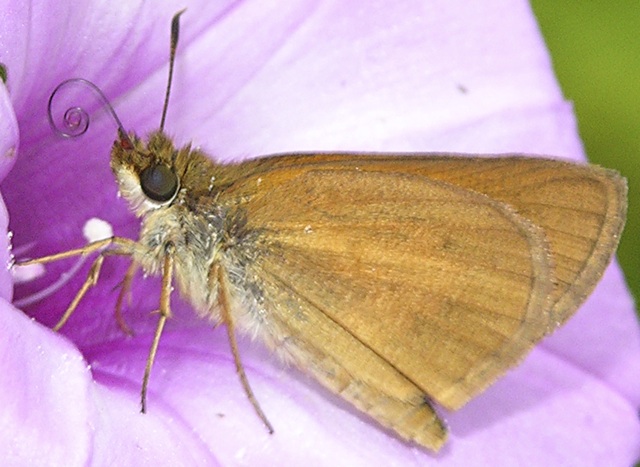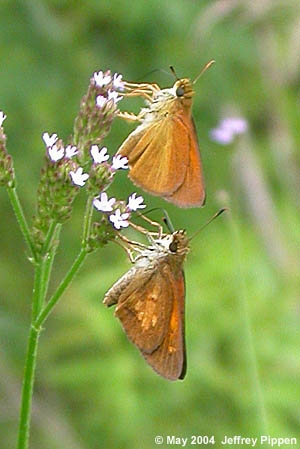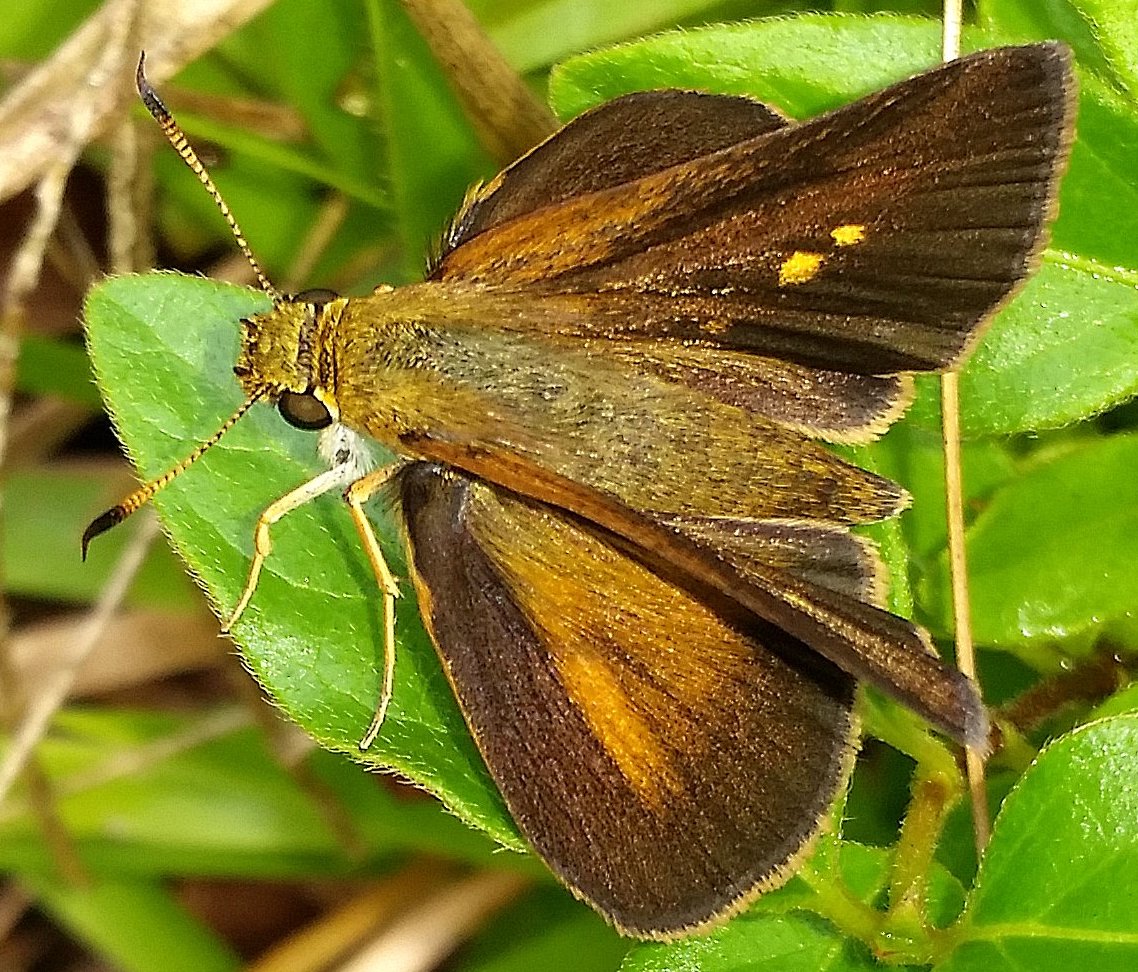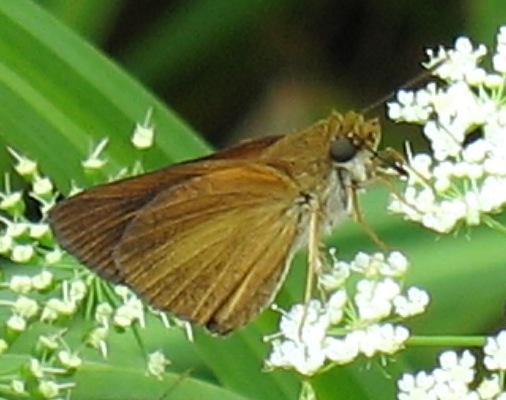|
| Common Name | Dukes' Skipper by Jeff Lewis => Dare Co., NC
29 Jun 08
[View PDF]
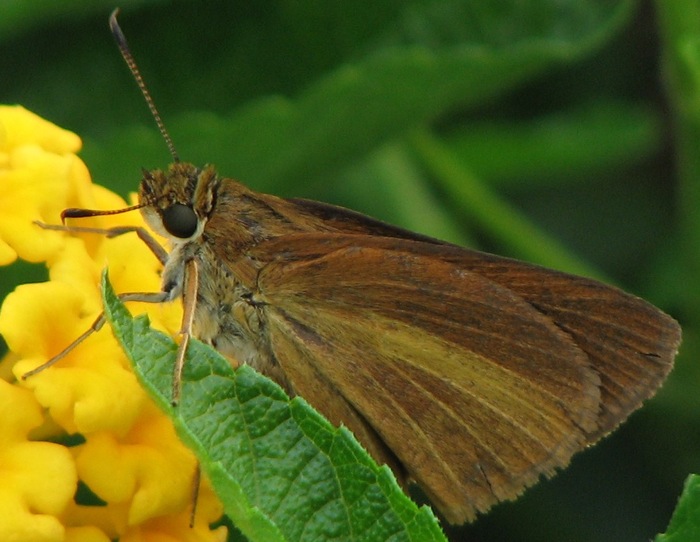 Click to enlarge Click to enlarge
[Google Images] GBIF [Global Distribution ] BoA [Images ] iNaturalist |
| Scientific Name | Euphyes dukesi
|
| Link to BAMONA species account. |
| Map | Click on a county for list of all database records for the species in that county.
 |
| Distribution | DISTRIBUTION: So far, found only at a few places in the tidewater section of the Coastal Plain, though extending from Currituck County to Brunswick County; finally recorded on the Outer Banks (Dare County) in 2008. Sadly, there have been no new county records since 2008.
|
| Abundance | ABUNDANCE: Rare and very local in the tidewater section, but perhaps absent from some tidewater counties. Though it can be quite common where found (occurs in colonies), it is one of the least numerous butterflies in the state, though suitable habitat appears to be common. Almost certainly not as rare as the few county records (Currituck, Dare, Beaufort, Craven, and Brunswick counties) indicate, as there are now three single-day counts of 50 individuals, and one (in 2010) of a remarkable 200 individuals.
|
| Flight | FLIGHT PERIOD: Two broods; late May or early June to early July, and late July to late September. The gap between the flight periods in July is rather small.
|
| Habitat | HABITAT: The species occurs near freshwater or very slightly brackish forested wetlands, usually where rather shaded. It is found mainly along the edge of a wet woods and marsh ecotone, supposedly where tupelos (Nyssa biflora or N. aquatica) are present. Steve Hall and I have seen it at three locales in NC -- one site is the edge of a wet woods along a dirt road (with marsh nearby), and the other two are where slightly brackish marsh meets wet woods. John Fussell found large numbers in 2009 and 2010 in Craven County in several wet forests with abundant sedges.
|
|
| | Plants | FOOD AND NECTAR PLANTS: The foodplants are various sedges (Carex spp.); whether a particular species is favored in NC is not known, though the large colonies in Craven County use Shoreline Sedge (Carex hyalinolepis) as a foodplant. The species nectars on Pickerelweed (Pontederia cordata), Blue Mistflower (Conoclinium coelestinum), tall vervains (Verbena spp.), and others.
|
| Comments | COMMENTS: This species ought not be rare, as suitable habitat in NC is certainly not scarce. It is possible that the species is selective of its foodplant -- mainly Shoreline Sedge (Carex hyalinolepis), which might be a local species in the state. John Fussell found large numbers in 2009 along wooded creeks in Craven County, using only Shoreline Sedge as a foodplant. The species should be looked for where roads or trails bisect a swamp and extend into a marsh, or where marshy openings in wet woods, such as along canals and sunny ditches, are present.
One of the highlights of the 2008 field season in the state was the discovery by Jeff Lewis (and follow-up visits by Tom Stock) of a sizable population of Dukes' Skippers at Duck on the Dare County coast. Both observers documented butterflies from this first new NC site in 15 years with photographs. Interestingly, the site (a local park) is only a few acres in size, suggesting that the species can occupy tiny areas of suitable marsh/swamp ecotone habitat in the coastal zone. Several additional new sites have been found in Craven County in 2013-2014, especially by John Fussell, and he found a new site (along a different creek) in that county in 2016. Fussell checked one or two sites in Jones County in 2016 that had the requisite foodplant, but he failed to find any skippers. Nick Flanders found a new site in Currituck County in 2016; and new sites were located in 2021 in Currituck and northern Dare counties. There are certainly more colony sites to be discovered around the margins of Currituck Sound and the sound side of the northern Dare County Outer Banks.
NOTE: The common name is pronounced "DOOKZ-EZ", not "DOOKZ". The species is named after W.C. Dukes. Had it been named after a Mr. Duke, the spelling would be "Duke's" and pronounced with one syllable. The spelling of Dukes' -- apostrophe after the "s", is correct, as would be Dukes's.
|
State Rank | S1S2 | | State Status | SR |
Global Rank | G3G4 | | Federal Status | |
| Synonym |
|
| Other Name |
|
|
|

 >>
>>